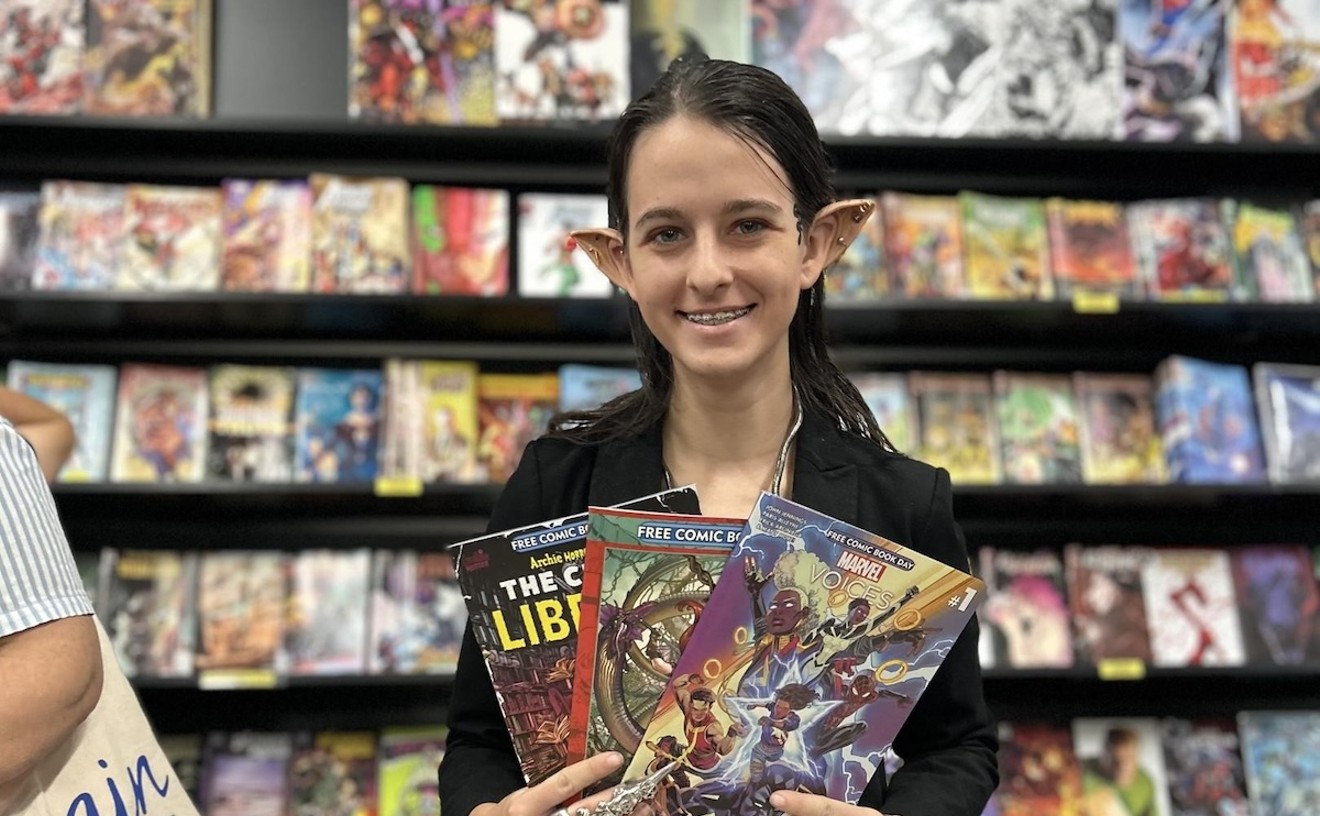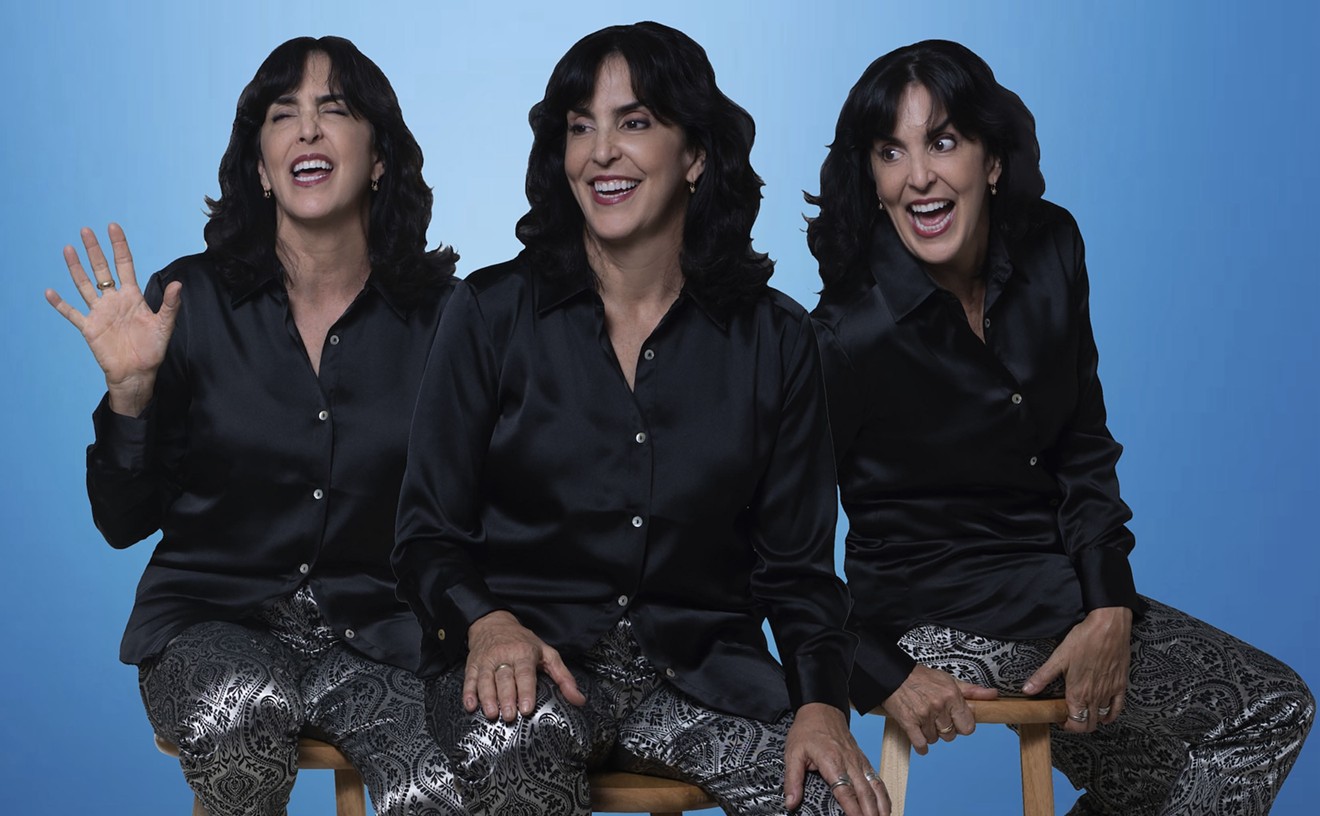There's so much wrong about Miami's urban fabric: poor design, structural monotony, congestion. And a critical problem is our lack of green areas, for shade, for leisure. Perhaps our politicians play into this perception of Miami as a city by the sea, therefore justifying their neglect of urban greenery -- that is, manmade and designed green areas within the city. You won't find much thought about landscaping out among the cookie-cutter developments, ugly malls, and just generally shoddy housing surrounding us. Miami's downtown is ungreen and unfriendly. Our rundown ghettos are decrepit after decades of unemployment, drugs, neglect. Local politicians keep denying the truth, while developers receive carte blanche to do what they will. The idea is to "develop" Miami by building tall boxes for rich Latin Americans and real estate speculators, while we take on the burden of more traffic congestion. No, that empty lot next to you will not turn into a public garden. Bottom line: You won't know or enjoy Miami -- by foot. You will only see it through a moving car's window.
Recently I had the opportunity to chat with a visiting Cuban architect who asked to remain anonymous, here on a Guggenheim fellowship. After going over the obligatory topics of the moment -- Libeskind's winning project for Ground Zero, the pros and cons of postmodern memorials -- I switched the subject to our city. Fresh from Havana on his way to New York, he talked about Miami, a city he dreamed about and longed to visit. "Miami," he said, sounding astonished, is "makeshift design and no trees." He elaborated: "I don't have a car, so to see the city I walk a lot, only to share the depression of all these people around me ... on foot, drained ... waiting for a bus under the sun. I feel like I'm in Havana, after ten minutes we all stink." This was hardly someone bashing Miami. He compared both cities, making a distinction between our greenless glitter and the Cuban capital's state of increasing decrepitude.
In Havana's case, it's hardly a fault of design, since there was a will to build that city taking into account the severity of a subtropical climate. While both cities share the same average temperature, in Havana narrow streets actually protect people from the sun, while wide portals supported by colonnades and plenty of trees on the big arteries provide shade for pedestrians.
Some may say that the comparison between Miami and Havana is unfair -- Havana was founded in the Sixteenth Century and has a mosaic of premodern styles, while Miami is a relatively young city. Yet this doesn't take away the fact that being a pedestrian in Miami is a curse. To prove the point, take a drive along any of our main arteries and count the trees.
Trees are much more than a decorative fixture. Under a tree, we gather to talk and rest after a stroll. Just as we take in a garden, we have an emotional reaction steered by such factors as light, color, and texture. The symmetry of landscaping promotes aesthetic order and understanding. It fosters human interaction so necessary for civic life. A meaningful green site can tell a valuable story about who we are and where we want to go as people.
Increasingly younger architects and planners are planting vegetation around our buildings, trying to develop socially interactive ecological environments. But we need to do more. Vegetation needs to be more than a "touch of green" or a marginal fixture to buildings. As architect Kenneth Yeang advises in his book Tropical Urban Regionalism, "architecture must take into account ecological and regional diversities." Shouldn't we move beyond the palm tree syndrome? As if it alone can provide a symbol for a lost civic purpose? We don't need to sell more Florida postcards; what we need is a nice walk in the afternoon.
Wild Seduction Gallery is indeed an alternative Miami space, in that it does provide a different choice outside the norm. Since it opened in April 2002, this venue has presented a mismatch of burlesque, pop, and vernacular along with traditional media, performance, video, installation, and stylish S&M acts. A lot here is uncommon, from lighting, presentation, and cataloguing to the gallery's location -- outside the main art corridors. "Violent Art," its latest exhibit, mixes Chicano Noir, kitsch Dutch, and Weegee-like imagery, plus memorabilia from Stanley Kubrick's A Clockwork Orange.
Adan Hernandez is an artist who uses images to render a Chicano aesthetic of violence and alienation. He has worked in Hollywood for film director Taylor Hackford (Devil's Advocate), who commissioned him to create paintings and a mural for the barrio-cult classic Blood In Blood Out. Hernandez's smaller pieces are laser reproductions of his own drawings on black cardboard. Compelling, but the frame's edges were too busy with the artist's own doodling, distracting the attention from the real action. On the other hand, Un Balazo en la Noche (A Shot in the Night), a big canvas, is a powerful rendition of a dark world in a single frame. I liked Hernandez's quick and disparate but highly imaginative brush execution.
Robert Preston's oils of city underworlds and freak accidents borrow from black-and-white photos from his father, a Boston newspaper photographer. Preston's images have a Weegee-like hit-or-miss reportorial flavor we don't normally associate with Realist painting. It's somewhat baffling to see these canvases -- with imagined colors and minute details conveying a time somewhere in the past. My favorite Preston is Electra Crash, a gruesome scene of an early 1960s plane crash, at dusk. A two-person seat lies near an algae-covered shore, its occupants still buckled in and wet, dressed in suits with their faces crushed.
Don't miss Charles Krafft's china pistols and assassin kit, as well as his porcelain grenades. My favorite reads Anthrax, which I found to be the most subversive piece in the show. His pistols and grenades are executed in Delft white-and-blue porcelain, typically associated with Dutch windmills and corny pastoral souvenir scenes. At Wild Seduction, a catalogue of Krafft's work entitled "Villa Delirium" and published by Last Gasp shows consistent work by an original and witty artist.
Finally, in a manner emblematic of this gallery, there is Herman Makkink's infamous Rocking Machine, a smooth and glossy white fiberglass sculpture, with a penis rising from a woman's rear -- a prop used by Malcolm McDowell to murder a wealthy woman during a robbery in the aforementioned movie Clockwork Orange.










